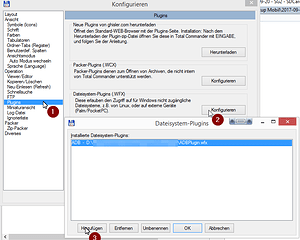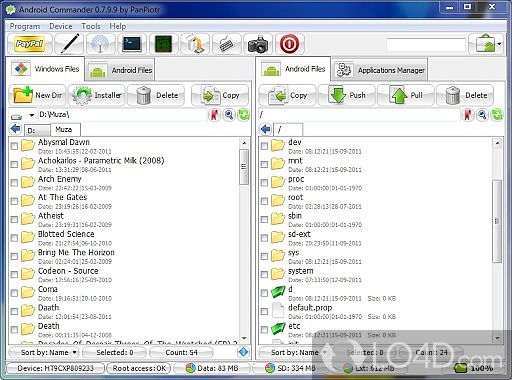

- Android adb plugin double commander how to#
- Android adb plugin double commander for android#
- Android adb plugin double commander android#
- Android adb plugin double commander simulator#
- Android adb plugin double commander mac#
Android adb plugin double commander android#
Module Name Īll Java/Kotlin native modules in Android need to implement the getName() method. For native module type-safety, which is coming in future releases, React Native looks at each native module's JavaScript spec and generates an abstract base class that extends ReactContextBaseJavaModule. Using ReactContextBaseJavaModule will also make it easier to make your native module type-safe in the future. ReactContextBaseJavaModule gives access to the ReactApplicationContext (RAC), which is useful for Native Modules that need to hook into activity lifecycle methods. However we recommend that you use ReactContextBaseJavaModule, as shown above. It is worth noting that technically Java/Kotlin classes only need to extend the BaseJavaModule class or implement the NativeModule interface to be considered a Native Module by React Native. For Android, Java/Kotlin native modules are written as classes that extend ReactContextBaseJavaModule and implement the functionality required by JavaScript.
Android adb plugin double commander how to#
Image of how to add the CalendarModuleClassĪs you can see, your CalendarModule class extends the ReactContextBaseJavaModule class. This Java/Kotlin file will contain your native module Java/Kotlin class. The first step is to create the ( CalendarModule.java or CalendarModule.kt) Java/Kotlin file inside android/app/src/main/java/com/your-app-name/ folder (the folder is the same for both for either Kotlin of Java). We also recommend enabling Gradle Daemon to speed up builds as you iterate on Java/Kotlin code.
Android adb plugin double commander for android#
Android studio is an IDE built for Android development and using it will help you resolve minor issues like code syntax errors quickly. We recommend using Android Studio to write your native code. You can find your Android project here within a React Native app: Image of where you can find your Android project To get started, open up the Android project within your React Native application in Android Studio. By the end, you will be able to call CalendarModule.createCalendarEvent('Dinner Party', 'My House') from JavaScript, invoking a Java/Kotlin method that creates a calendar event. In the following guide you will create a native module, CalendarModule, that will allow you to access Android’s calendar APIs from JavaScript. Please start by reading the Native Modules Intro for an intro to what native modules are. The New Architecture uses Turbo Native Module and Fabric Native Components to achieve similar results. They will be deprecated in the future when the New Architecture will be stable.

If(rdova & Module and Native Components are our stable technologies used by the legacy architecture. Var example = angular.module('starter', ) Let’s start by creating a fresh Ionic Framework application from the command line: This information paired with the type of error should be enough to resolve the issue. Notice that the Terminal not only displays the file that the error occurred in, but it also tells us the line number. With logcat running, launch the application and you should see something like the following: Because there are no items in the list prior to trying to delete, it will throw an index out of bounds error. I went ahead and created a new ArrayList and then tried to delete from it. ArrayList public class TestProjectActivity extends Activity
Android adb plugin double commander mac#
If you’re using Mac or Windows and are not set up, I suggest a few Google searches on the topic. It can be seen in one of my previous articles. If you’re using Ubuntu Linux, I have a script that will do this all for you. It is not restricted to telling just what our app is doing, but what the whole device and what every app on the device is doing.Įverything after this point will assume that you have the Android SDK installed and configured correctly.
Android adb plugin double commander simulator#
The Android Debug Bridge (ADB) is a command line interface that has the power to tell us exactly what our app is doing inside a simulator or device.

I do this because 90% of the time, the log files have an error message that tells us exactly what line the error is on.įor Android development, we are lucky enough to have a fantastic debugging tool shipped with the SDK.

The first thing I try to ask for are the log files. Debugging your source code is a critical part of any application development process and Android is no exception.Ī lot of people post comments or email me asking me to help them with their application that isn’t working.


 0 kommentar(er)
0 kommentar(er)
